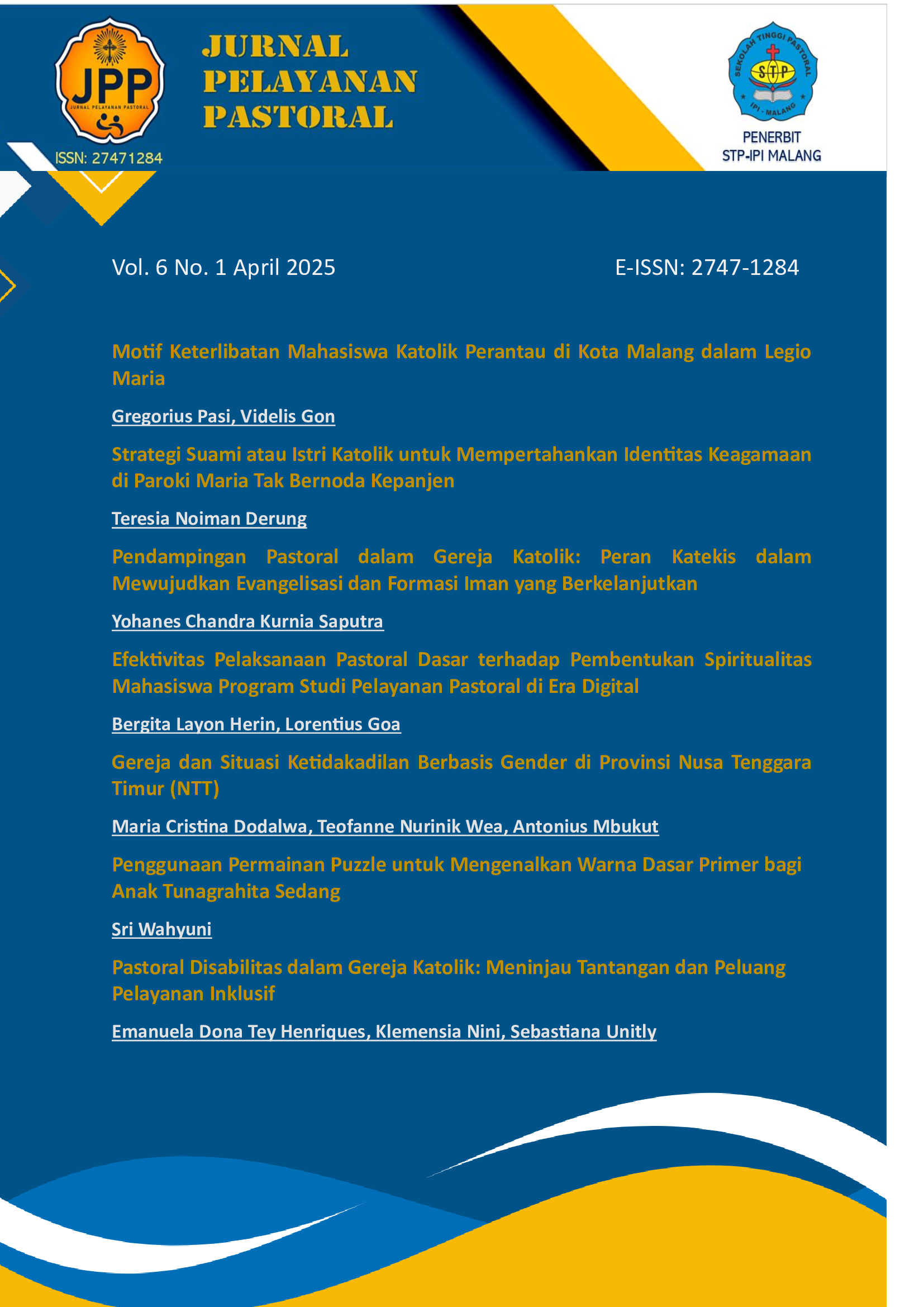Gereja dan Situasi Ketidakadilan Berbasis Gender di Provinsi Nusa Tenggara Timur (NTT)
DOI:
https://doi.org/10.53544/jpp.v6i1.656Keywords:
Church, Dialogue, Gender, Injustice, NTTAbstract
This study aims to describe the forms of gender-based injustice in East Nusa Tenggara province and explain the attitude of the church in dealing with the situation. The method used in this research is a qualitative method with a descriptive approach. Data sources were obtained through literature study. Researchers read books, journals, research reports and news in online and printed mass media regarding the teachings of the Catholic Church and the situation of gender injustice in the context of East Nusa Tenggara. The data obtained from the reading were then interpreted according to the perspective of gender theory and further examined from the perspective of Christian theology. Based on this study, it was found that gender-based injustice is a social fact that occurs in almost all regions of NTT. The factors that trigger gender-based injustice are an overly dominant patriarchal culture, government policies that are less friendly to women and children, and erroneous religious interpretations. The Catholic Church must truly declare its partiality to women and formulate pastoral policies that are friendly to women and children. The main limitation of this study is the lack of data based on up-to-date field research. Therefore, the researcher recommends that an in-depth field study on gender-based injustice in NTT be conducted
Downloads
Published
How to Cite
Issue
Section
License
Copyright (c) 2025 Jurnal Pelayanan Pastoral

This work is licensed under a Creative Commons Attribution-NonCommercial-NoDerivatives 4.0 International License.
All articles published in the Jurnal Pelayanan Pastoral (JPP) are licensed under the Creative Commons Attribution 4.0 International License (CC BY 4.0). This license allows anyone to copy, distribute, display, and adapt the published articles, for both commercial and non-commercial purposes, as long as proper credit is given to the original author(s) and the source.
By publishing in JPP, authors agree that:
- The article may be reused by others under the terms of the CC BY 4.0 License, provided appropriate attribution is given.
- Authors retain their moral rights to the published work.
- The Jurnal Pelayanan Pastoral (JPP) encourages authors to share their work through institutional repositories, personal websites, and other academic platforms.
For more information, please visit the official license page: https://creativecommons.org/licenses/by/4.0/
















